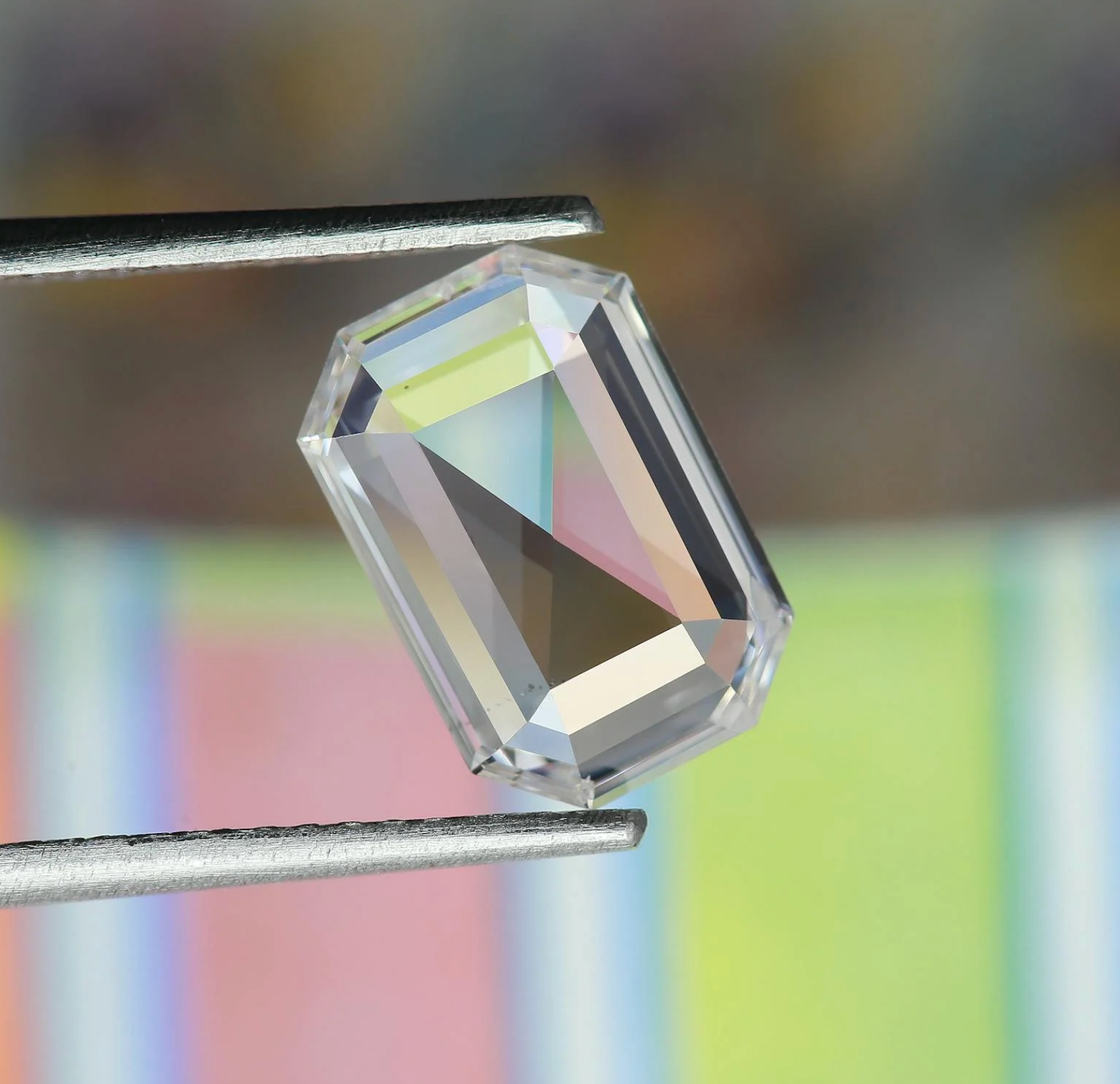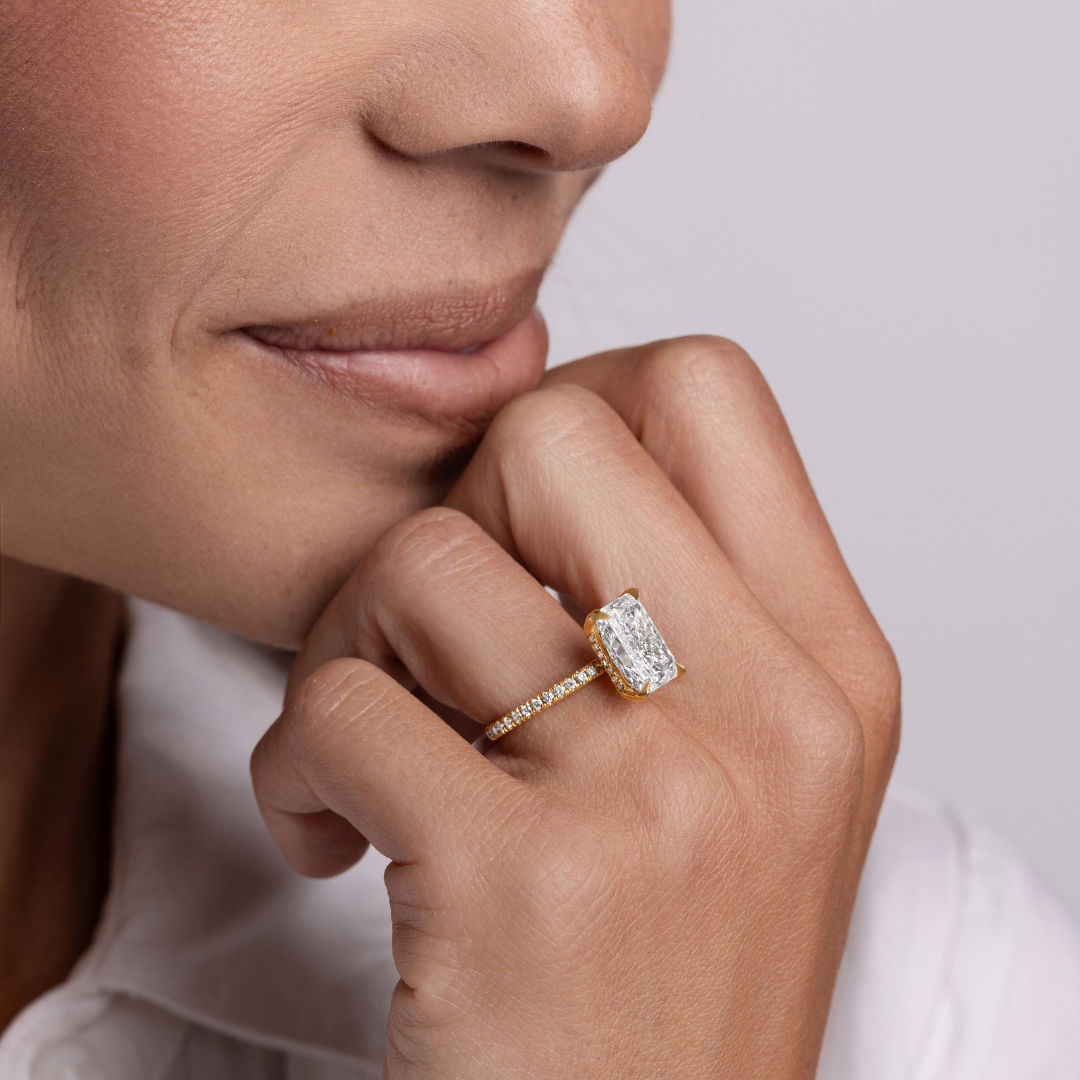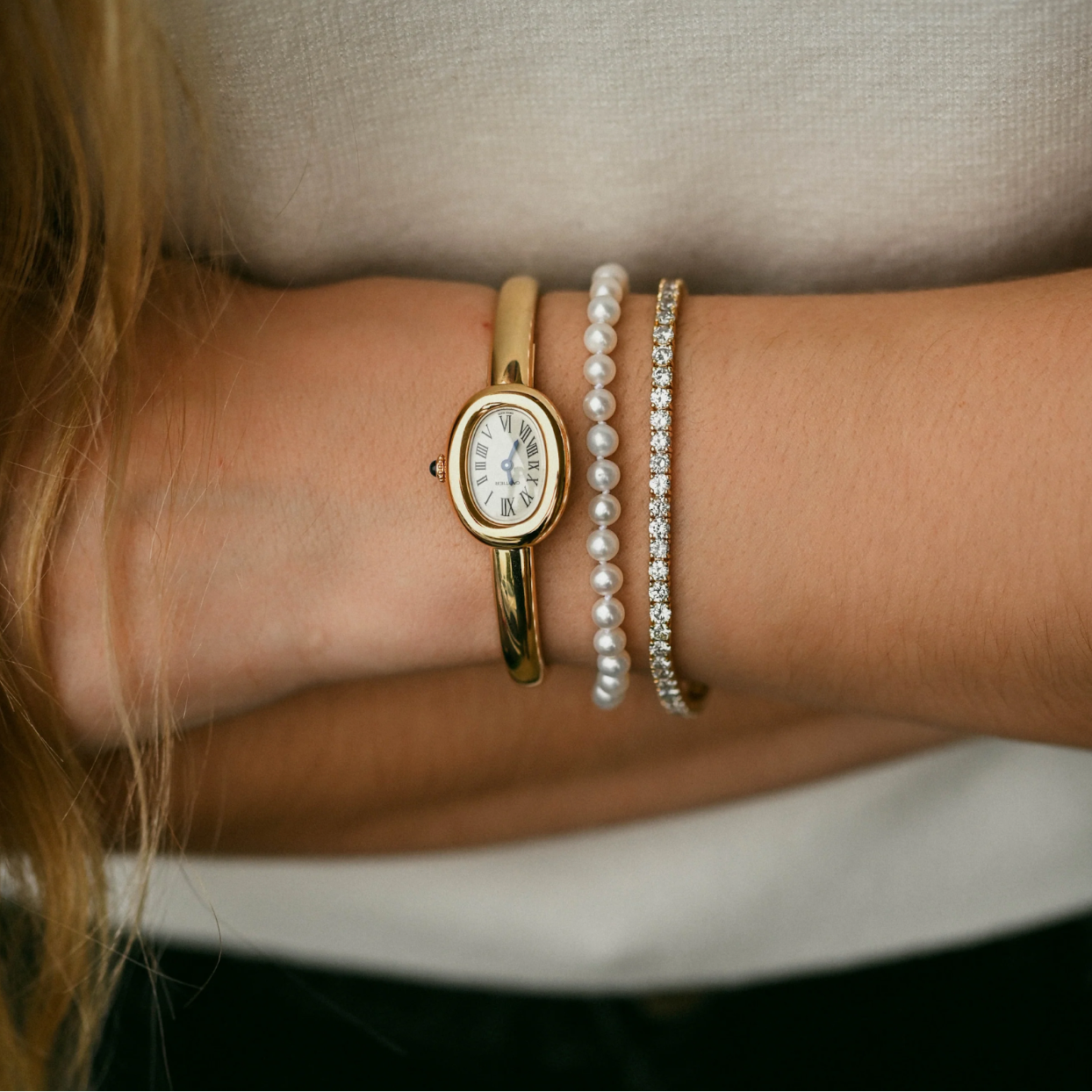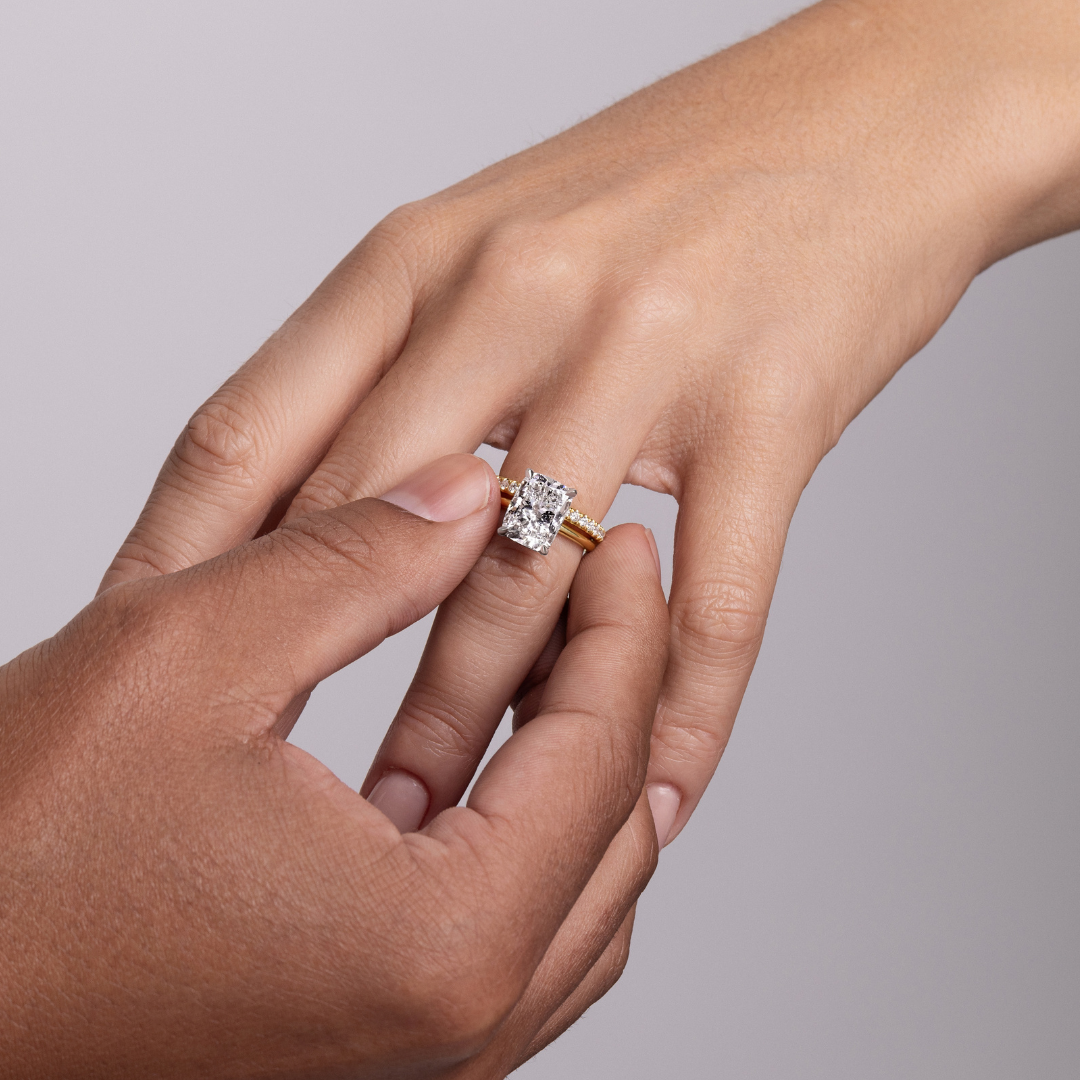Picking a diamond cut is tricky enough as it is, but when it’s a toss-up between an elongated cushion and an emerald cut, it feels almost impossible. At first glance, these two stunners may look pretty similar. But, if you take a closer look, you’ll see they are actually way different. So, don’t wave the white flag just yet!
In this guide, we dive into a head-to-head comparison to find out which diamond shape reigns supreme.
What Are Elongated Cushion Cut Diamonds?
As inferred by the name, elongated cushion-cut diamonds blend rounded corners with a square shape, giving them a pillow-like appearance. While their edges are straight, the corners are softly rounded, giving them a unique look as compared to other classic shapes.
What sets cushion cuts apart is their lack of strict guidelines regarding shape, table, or depth percentage, resulting in them being available in various styles that add to their versatility.
People often choose cushion cuts for engagement rings as a preferred alternative to the more common round, princess, or oval cuts. You’ll often spot them at the heart of halo settings, adding extra charm to the overall design.
What Is an Emerald Cut Diamond?
Emerald cut diamonds are real showstoppers credited to their distinctive, elongated rectangular shape. With linear facets that stretch across the gem, they boast a much larger surface area that catches the eye.
However, what really makes them stand out are their diagonally shaped corners with their polished edges that infuse them with an extra touch of elegance. And unlike round cuts, they don’t come to a sharp point and have a beautiful depth when you look at them from behind.
These diamonds are a budget-friendly choice for engagement rings, offering a refreshing alternative to round-cut diamonds. Just be careful not to mix them up with baguette diamonds—the two can look pretty similar to the naked eye!
Difference Between Elongated Cushion and Emerald Cut Diamond
Choosing between a cushion cut and an emerald cut can be quite a puzzle. To help you in picking the one that suits you best, we have put together a detailed comparison of these two beautiful cuts.
We have outlined their differences, along with comparing them on various parameters like facets, shape, brilliance, clarity, and price.
Facets
The main difference between a cushion and an emerald cut lies in how they're shaped and the style of their facets.
A cushion cut is a type of brilliant cut that can have various facet arrangements, often with a mix of larger and smaller facets. These facets are carefully angled to maximize the amount of light entering through the diamond’s surface, resulting in improved sparkle and shine.
On the other hand, emerald cuts are step-cut diamonds featuring facets that resemble a staircase from the center to the edges. These rectangular facets create a captivating “hall of mirrors” effect, giving the illusion of endless reflections within the diamond.
In summary, cushion cuts have a mix of triangular and kite-shaped facets that enhance sparkle, while emerald cuts showcase larger, distinct facets that create an open, sophisticated look with mesmerizing reflections.
Shape
The naked eye often can’t see how the individual facets are cut on a diamond. Instead, what sets one cut apart from another is its overall shape. When you compare a cushion cut to an emerald cut, their shapes are unmistakably different.
Cushion cuts can be made into various shapes, but they usually have rounded edges and a squarish body. Some popular ones are slightly longer than they are wide, giving a rectangular look.
In contrast, emerald diamonds boast a rectangular shape but with cropped corners as their defining feature. This shaping results in eight sides, but without any resemblance to a typical octagon where all sides are equal. Instead, the emerald cut's four diagonal edges are equal in length, while the other four sides match each other, giving it an elongated appearance.
Clarity
Clarity in a diamond is all about how visible the inclusions are. Cushion cuts do a better job of hiding these inclusions than emerald cuts, thanks to their higher degree of brilliance. The light bouncing off a cushion cut can mask those dark spots, making them look clearer.
Clarity is paramount when choosing a diamond. For cushion cuts, a clarity grade of SI1 or better usually does the trick. However, it's always a good idea to check it out in person or in high-quality photos, looking at it from different angles.
With emerald cuts, you might need a clarity grade of VS2 to get a similar clean look. Start with these grades and adjust as needed, keeping in mind that higher clarity means a higher price.
Brilliance and Fire
Cushion cuts are known for their strong brilliance since they’re a brilliant cut. Because of the many facets cut at just the right size and angle, these diamonds excellently reflect both white and colored light.
Similar to its brilliance, you can expect intense fire from cushion cuts. Basically, a diamond’s fire is when light splits into a rainbow of different colors, creating a glimmer of hue in all directions. The excellent symmetry and perfect facet arrangement of cushion cuts create an ideal environment for refracting light, resulting in a breathtaking display.
Emerald cuts don’t quite match the brilliance and fire of their elder sibling. Their step-cut facets, which are rectangular rather than triangular, aren’t made for the best light performance. However, this doesn’t mean that they need additional diamonds to shine—they can still look stunning in a solitaire setting.
You can easily find emerald cuts that don’t appear dull, but when placed alongside a cushion cut, the difference in brilliance and fire will be like night and day.
Color
The distinction in color appearance between an elongated cushion and an emerald cut stems from their unique faceting styles. The bigger facets of a cushion cut disperse light in various directions, giving them a vibrant appearance with more pronounced colors.
Consequently, the narrow facets of an emerald cut focus more on clarity and the gemstone’s natural color, resulting in a more understated color profile without much sparkle.
So, if you like your diamonds in colors that pop, a cushion cut is the way to go. Alternatively, an emerald cut offers a much more minimalistic and toned-down look.
Price
One great thing about emerald and cushion cuts is that they are generally cheaper than round cuts. If you have a round diamond and a cushion or emerald cut of the same quality, the round one will cost way more.
Emerald and cushion cuts are pretty close in price to each other. The reason behind their lower price tag is that they use most of the rough diamond in the final product, unlike other shapes that discard a larger percentage, which drives up their cost.
Elongated Cushion vs Emerald: Which One Is Better?
Having compared both cushion and emerald cuts, let’s get to the much-awaited question: which one is better?
Well, in this battle, elongated cushions came on the top with the slightest edge, mostly due to the fact that they shine brighter, hide inclusions, and are more readily available. However, each shape has its own charms and qualities that deserve appreciation.
An extra tip when deciding the cut is to think about how you want your hands to look. If you want your hands to appear longer and your fingers more slender, an emerald cut with its angular design is a great choice, whereas the rounded, softer shape of a cushion cut won’t have the same effect.
Ready to get your hands on the best diamond cut? Browse our collection of exquisite jewelry to get started.






Share:
Why East West Engagement Rings Are the Hottest Trend in 2024
June Birthstone: Pearl